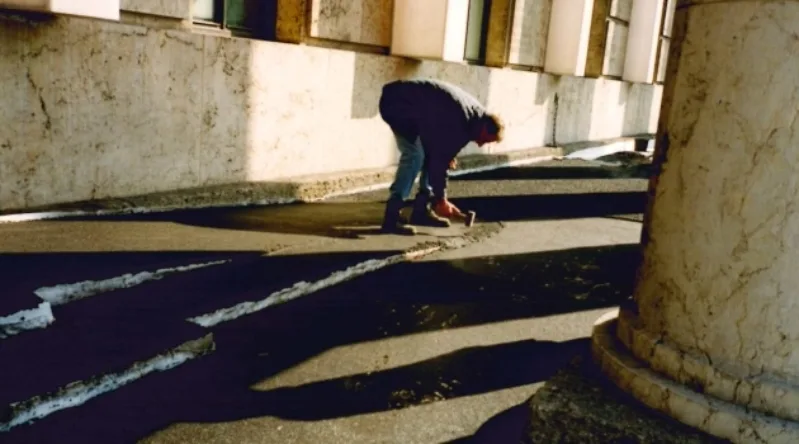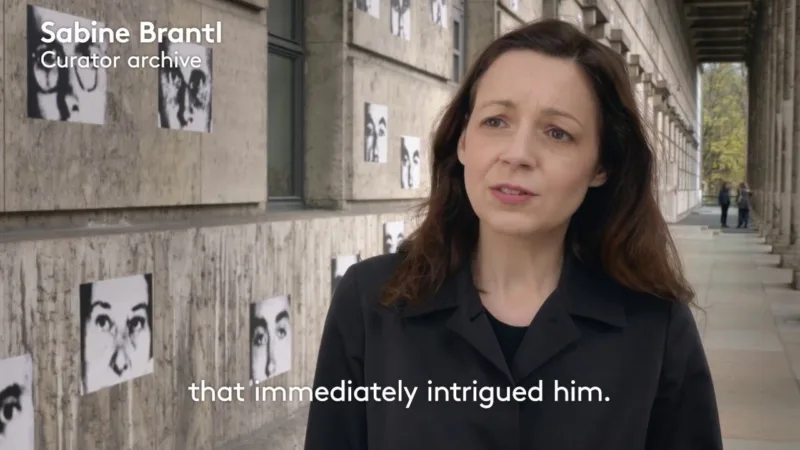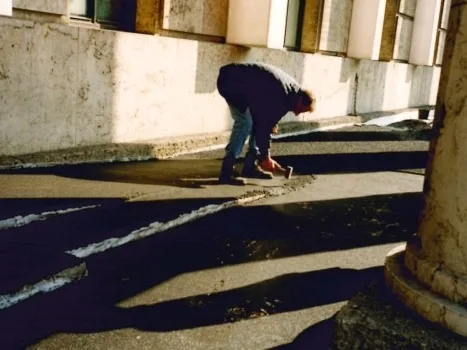The second presentation in Haus der Kunst's Archive Gallery focuses on interventions in the building's architecture and treatments of its facade. With Résistance by Christian Boltanski (1993–94) and Gustav Metzger's Travertine/Judenpech (1999), Haus der Kunst reanimates the first two artistic interventions created specifically for the facade and portico of the National Socialist building, which opened in 1937.
In 1999, action artist Gustav Metzger coated the colonnade along Haus der Kunst's facade with a layer of tar and called this work Travertine/Judenpech. In 2010, he presented Strampelde Bäumf/Mirror Trees on Haus der Kunst's north terrace, his installation of withered trees that have been torn from the earth by the roots, turned upside down and poured in concrete. The work's title refers to the origins and childhood of the artist, who was born to orthodox Jews in Nuremberg in 1926. In 1939, Metzger was sent to London on a children's rescue transport organized by the Refugee Children's Movement. There, Metzger survived the Holocaust, but he never saw his parents again, a trauma that marked both his life and his art. Because it was closely intertwined with his own biography, Haus der Kunst's history was critical for Metzger's decision to present his installation Travertine/Judenpech in 1999. The artist coated the granite surface in front of the main entrance with a 60-square-meter layer of asphalt – a building material that had long been referred to as Judenpech [meaning both Jew's pitch and Jew's misfortune], an overtly anti-Semitic term. Travertine was one of the materials the Nazis favored for major construction projects such as the Nuremberg Nazi Party Rally Grounds. Travertine/Judenpech was presented from March to June 1999 as a temporary installation within the context of the collaborative project "Dream City", featuring thirty artists as a joint project of the Kunstraum München, Museum Villa Stuck, and Siemens Kulturprogramm.
The interventions of Christian Boltanski and Gustav Metzger on the building's south facade can also be visited outside of regular opening hours.







